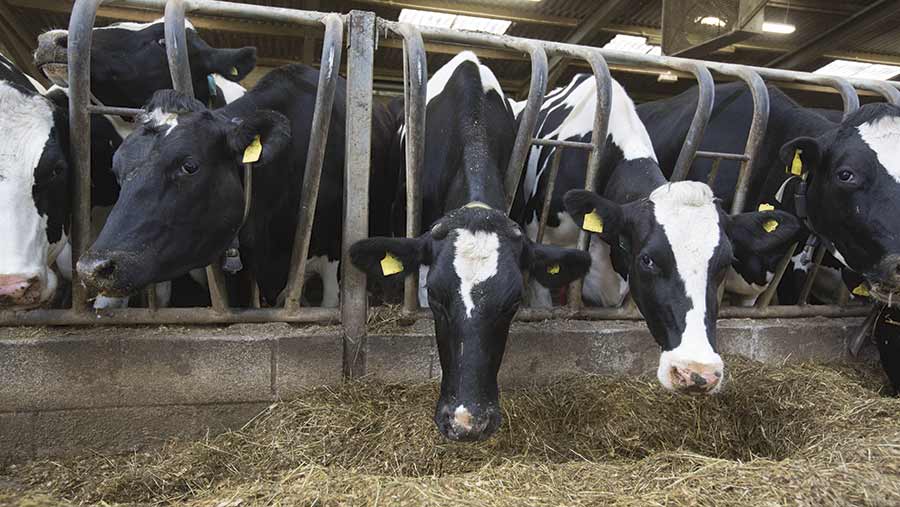Fine-tuning fatty acid aids dairy performance, study shows
 © Tim Scrivener
© Tim Scrivener Dairy farmers could improve fertility in early lactation and drive milk fat without risking body condition by fine-tuning fatty acid feeding throughout a cow’s lactation.
Researchers from Michigan State University’s department of animal science have demonstrated that while feeding C16.0 palmitic fatty acid to early lactation cows boosted milk fat and improved fibre digestion, it caused cows to mobilise more bodyweight.
However, feeding C18:1 oleic fatty acid stimulated insulin production, allowing cows to partition more energy into maintaining body condition.
See also: How to minimise milk fat depression
Fats are made up of individual fatty acids.
There are five key fatty acids in rumen diets with each having different roles to play (see table), however, only three require supplementation.
“Each fatty acid has a unique mode of action and potentially a different role to play at different times during the lactation,” explained Jonas de Souza, who has been leading the research alongside Adam Lock.
What this means at farm level
Prof Lock and Mr de Souza believe these latest findings demonstrate that farmers would be better off feeding different types of fatty acids at different stages of the lactation.
As a result, Volac has launched a Fat Feeding Programme aimed at helping better formulate fat in rations.
“We must be thinking of the fatty acid profile we are adding to diets and not just fat in total,” explained Richard Kirkland, technical manager at Volac, at the programme’s launch in Birmingham on 31 August.
The concept is cows are fed rumen protected C18:1 in early lactation to prevent weight loss and metabolic issues and instead aid better fertility. Then, as the lactation progresses, C16 ratio can be stepped up, when it is safer to do so, to sustain high levels of milk fat production, explained John Newbold, head of Volac’s technical department.
The challenges with feeding different fats
Prof Lock admitted this type of feeding regime would be “practically challenging” for farms feeding one ration however, he said there were benefits to targeted feeding approaches.
“If you have one diet on your farm you are underfeeding or overfeeding fat.
“The larger the farm, the more opportunity there is to feed different rations,” said Prof Lock, adding controlling starch in late lactation and increasing fats instead could reduce the risk of cows getting fat.
Fatty acids and their effects |
||
|
Fatty acid |
Name |
Effect |
|
C16:0 |
Palmitic acid |
Improves milk fat
|
|
C18:1 |
Oleic acid |
Increases insulin and partitions energy to body fat to increase body condition as well as improving egg and early embryo development |
|
C18:3 |
Linolenic acid |
Can help improve embryonic survival |
|
C18:0 |
Stearic acid |
Supplementation should be avoided as high levels in the diet result in poor digestibility |
|
C18:2 |
Linoleic acid |
Supplementation not required as animals consume large quantities in the form of cereals and maize grains. |
